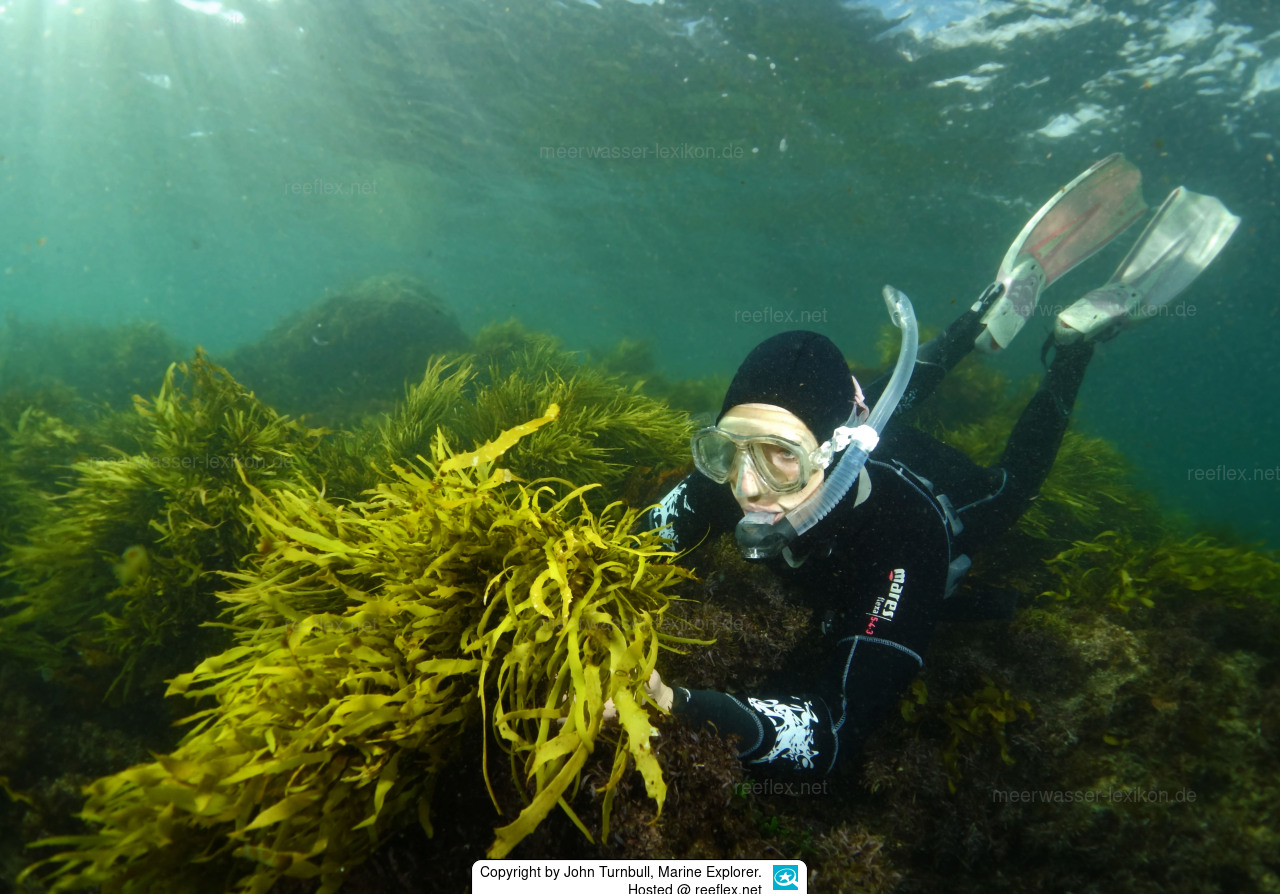Info
(Labillardière) C.Agardh, 1839
Phyllospora comosa is a macrobrown alga endemic to Australia and Tasmania, which not only serves as food for many marine animals in temperate water zones, but is also quite excellent as a nursery, hiding place from predators, e.g. for lobsters and abalone clams, and last but not least as a producer of oxygen through the photosynthesis it performs, and thus it is of high biological importance.
Unfortunately, algae forests in many parts of the world (including Australia) are in sharp decline or have already disappeared completely, the declines are usually due to human impacts in these ecosystems, including climate change and ongoing pollution. Currently, the situation is already so dramatic that populations of Phyllospora comosa can no longer regenerate on their own, and it is thanks to many marine biologists and volunteers that they are helping to rebalance the still disturbed ecosystem through targeted reintroduction projects.
Algae clean the sea, this is known to every marine aquarist who operates an algae refuge for their own water purity, breaks down detritus, leads to a measurable increase in biodiversity.
Projects such as the reintroduction of kelp and sea grasses lead to an improvement in the ecological and also economic value of marine habitats.
Establishing new kelp forests in shallow waters and many rocky bays helps in many ways to revitalize orphaned reefs and coastal zones as well, so this meaningful activity should be supported.
One of these great projects is the CRAYWEED RESTORATION PROJECT of the School of Biological, Earth and Environmental Sciences in Sydney.
Algae clean the ocean, this is known to every marine aquarist who operates an algae refuge for their own water purity, breaks down detritus leads to a measurable increase in biodiversity.
Projects such as the reintroduction of kelp and sea grasses lead to an improvement in the ecological and also economic value of marine habitats.
For more detailed information on this reintroduction project, please use the link below.
Synonym:
Fucus comosus Labillardière, 1806
Phyllospora comosa is a macrobrown alga endemic to Australia and Tasmania, which not only serves as food for many marine animals in temperate water zones, but is also quite excellent as a nursery, hiding place from predators, e.g. for lobsters and abalone clams, and last but not least as a producer of oxygen through the photosynthesis it performs, and thus it is of high biological importance.
Unfortunately, algae forests in many parts of the world (including Australia) are in sharp decline or have already disappeared completely, the declines are usually due to human impacts in these ecosystems, including climate change and ongoing pollution. Currently, the situation is already so dramatic that populations of Phyllospora comosa can no longer regenerate on their own, and it is thanks to many marine biologists and volunteers that they are helping to rebalance the still disturbed ecosystem through targeted reintroduction projects.
Algae clean the sea, this is known to every marine aquarist who operates an algae refuge for their own water purity, breaks down detritus, leads to a measurable increase in biodiversity.
Projects such as the reintroduction of kelp and sea grasses lead to an improvement in the ecological and also economic value of marine habitats.
Establishing new kelp forests in shallow waters and many rocky bays helps in many ways to revitalize orphaned reefs and coastal zones as well, so this meaningful activity should be supported.
One of these great projects is the CRAYWEED RESTORATION PROJECT of the School of Biological, Earth and Environmental Sciences in Sydney.
Algae clean the ocean, this is known to every marine aquarist who operates an algae refuge for their own water purity, breaks down detritus leads to a measurable increase in biodiversity.
Projects such as the reintroduction of kelp and sea grasses lead to an improvement in the ecological and also economic value of marine habitats.
For more detailed information on this reintroduction project, please use the link below.
Synonym:
Fucus comosus Labillardière, 1806







 Dr. John Turnbull, Marine Explorer, Australien
Dr. John Turnbull, Marine Explorer, Australien



